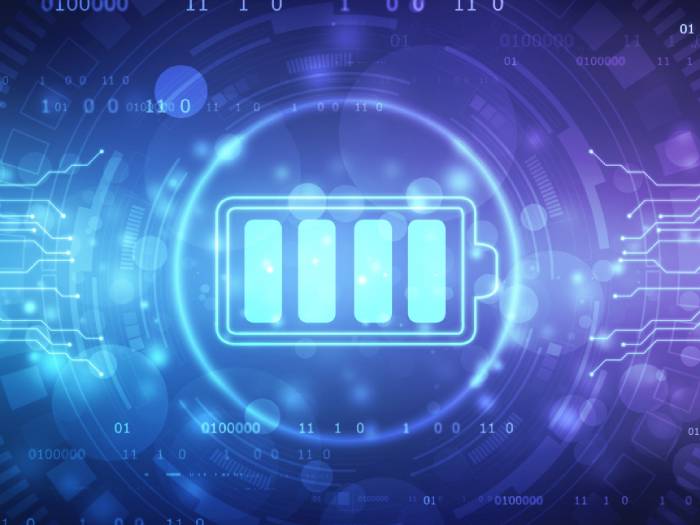E-mobility, software and autonomous driving: Volkswagen Group’s NEW AUTO
The CEO Herbert Diess presented the 2030 NEW AUTO strategy, which will drive the Group’s transformation into a software-driven company. Digitalisation is at the heart of this clear and ambitious plan which opens up new business opportunities, particularly around services.
Fully electric vehicles, software, batteries and charging infrastructure, and mobility solutions are the pillars of the NEW AUTO strategy, which will accompany the Volkswagen Group on its journey of transformation until 2030.
The world of mobility has been completely revolutionised by two macro trends: on the one hand, the affirmation of electric drivetrain as future leading technology and, on the other, the growing importance of software.
Amid all the changes, the Volkswagen Group intends to continue its leading role, as CEO Herbert Diess emphasises: “We set ourselves a strategic target to become global market leader in electric vehicles – and we are well on track. Now we are setting new parameters. That means for us: technology, speed and scale will matter more than today.”
Future platforms
What’s the principle behind the new strategy? Developing mobility solutions that are sustainable, connected, safe and tailored to future generations.
The Group’s approach is clear: it will develop and implement next-generation technology platforms to reduce complexity, create synergies and achieve significant economies of scale. The platform model will be applied in four main areas: electric vehicle architecture, software, battery technology and mobility solutions.
E-mobility
New priorities have been set to exploit the opportunities linked to electric mobility, with sustainability and decarbonisation as key elements in the NEW AUTO strategy too. By 2050 at the latest, the Group intends to operate on a climate neutral basis. Continuous e-mobility development will mean that in 2030, in major markets, 50% of all new Volkswagen Group vehicles is expected to be fully electric, rising to 100% in 2040.
In future, the entire Group range of models will be based on the SSP (Scalable Systems Platform). This mechatronics platform will significantly reduce complexity over time. It will further improve on a process that began with three platforms for internal combustion engines (MQB, MSB and MLB), and was itself followed by two platforms for full electric models (MEB and PPE).
The Group plans to start the production of pure electric vehicles on the SSP from 2026 onwards; over the platform’s lifetime, more than 40 million vehicles are projected on this basis. Like the MEB today, the SSP will be open to other car manufacturers.
Software

CARIAD, a specialist company owned by the Volkswagen Group, aims to develop the leading automotive software platform by 2025. This will constitute the software backbone for all Group cars. CARIAD is currently working on three platforms: E³ 1.1 allows for upgrades and over-the-air updates of the MEB product portfolio, such as the Volkswagen ID.4, the ŠKODA Enyaq or the CUPRA Born; the premium software platform E³ 1.2, due to be released in 2023, which will enable a variety of functions including a new unified infotainment system and over-the-air updates for Audi and Porsche vehicles; and the E³ 2.0 software stack, which will be launched in 2025, featuring a unified operating system for vehicles from all Group brands and level-4 readiness for autonomous driving.
As mentioned, software plays a decisive role in the NEW AUTO strategy and the company’s transformation into an integrated mobility group; it will pave the way to a completely new ecosystem and thus also to new data-based business models. Learning from a vast pool of real-time data through always-connected, automated driving, the Group fleet can be continuously updated with new features and tailored services. The so-called Big Loop Process for millions of vehicles will significantly expand the product lifecycle. By 2030, up to 40 million vehicles across brands will be operating on the Group’s software platforms.
Batteries and charging infrastructure

Proprietary battery technology, charging infrastructure and energy services are key success factors in the new mobility world. Therefore, power will be a Volkswagen Group core competency by 2030. There are two main pillars to this: “battery cell and system” and “charging and energy”, both under the responsibility of the new Technology division.
Reducing complexity features as a theme in this area too, in the form of a unified battery cell format. This will bring two benefits: cost reductions of up to 50% and the opportunity to use it for up to 80% of Group models.
Another priority is to establish a controlled battery supply chain by setting up new partnerships and tackling all aspects of the process, from raw material to recycling. The goal is to create a closed loop in the battery value chain.
The giga factories
Six giga factories in Europe, with a total production capacity of 240 GWh, will be operating by 2030, helping to secure battery supply.
The first location in Skellefteå, Sweden, will be operated by Northvolt AB. Production here will begin in 2023. The second location in Salzgitter will see the Volkswagen Group and Chinese cell specialist Gotion High-Tech collaborating on developing and industrialising the volume segment of the unified cell. In this case, production is scheduled to begin in 2025.
Volkswagen Group is considering Spain as an option for the third giga factory. The Group intends to make the country a strategic pillar of its electric campaign and is deciding whether to establish the entire value chain of electric cars in the Iberian Peninsula, where production of the Small BEV Family is planned to take place from 2025. Here too a yearly capacity of 40 GWh hours is envisaged. The final decision will depend on the general framework and state subsidies.
Charging infrastructure and energy services
The Volkswagen Group is also committed to boosting public charging infrastructure in Europe, China and North America.
An example of this is the joint venture with Enel X designed to enhance electric vehicle uptake in Italy. The partnership will own and operate a high-power charging (HPC) network infrastructure with more than 3,000 charging points of up to 350 kW each across the country by 2025.
Overall, the Volkswagen Group will implement 18,000 HPC points in Europe, 17,000 in China and 10,000 in the U.S. and Canada.
Another significant element of the strategy relates to the energy ecosystem. From charging hardware to energy-saving services, the Volkswagen Group’s objective is to offer customers a complete solution and a simple charging experience. As BEVs will become mobile power banks that can be fully integrated into the energy grid through bi-directional charging, new business opportunities will also open up.
Mobility solutions

Autonomous driving will play a key role in future mobility. In this regard, fully autonomous Mobility-as-a-Service (MaaS) and Transport-as-a-Service (TaaS) solutions will be an integral part of NEW AUTO.
The value chain in this case consists of four business areas: the self-driving system, its integration into vehicles, fleet management and the mobility platform.
Volkswagen Group is already at the forefront of autonomous driving: together with its strategic partner ARGO AI, it is developing a self-driving system for autonomous shuttles, while CARIAD will work on level 4 automated driving capabilities for passenger vehicles.
In the coming years, a single platform will integrate all the Group’s mobility offerings from renting, subscriptions and sharing through to ride hailing.
People
The revolution in mobility will of course also concern professional expertise. Currently, half of Volkswagen Group’s 660,000 employees are deployed in the traditional production of cars, but this is set to change rapidly.
That’s why the Group is rolling out a comprehensive global transformation program to manage the transition over the next 10 years, setting aside the necessary resources for restructuring and training its people in software-based skills.
